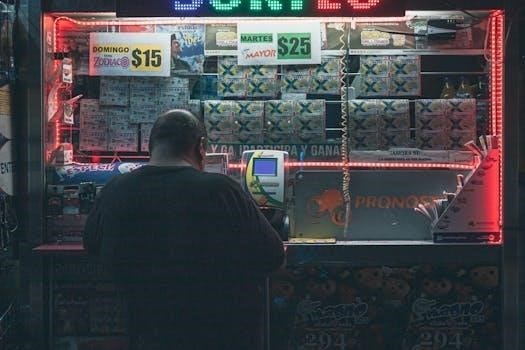The rejected mate trope explores a narrative where a destined pairing is initially denied. This often involves a fated connection, such as in werewolf lore, being broken or unfulfilled. Initial rejection is a pivotal plot point.
Overview of the Rejected Mate Theme
The rejected mate theme, a popular narrative in paranormal romance, particularly within werewolf fiction, centers around the initial denial of a predestined bond. This bond, often considered sacred or unbreakable, is shattered when one party, typically the alpha male, rejects his fated mate, often a luna. The rejection can stem from various reasons, including perceived weakness, societal pressures, or a simple lack of understanding of the bond’s significance. This pivotal moment creates immediate conflict, heartbreak, and sets the stage for a transformative journey. The narrative often explores the emotional turmoil experienced by the rejected mate, the consequences of the alpha’s actions, and the potential for a second chance. This theme taps into deep-seated desires for acceptance, belonging, and the power of love overcoming adversity. The concept of a second chance offers hope and the chance for redemption, which is usually a central part of this narrative; This trope has become a very common theme in modern literature.
Core Elements of the Narrative
Central to the rejected mate narrative are the initial rejection, the concept of fated mates, and the resulting emotional impact. These elements drive the plot and character development.
The Initial Rejection and Its Impact
The initial rejection is a core component of this trope, often causing severe emotional distress for the rejected mate. This act, considered rare and extreme, can lead to deep feelings of worthlessness and abandonment. In werewolf lore, it’s akin to being exiled or deemed less than, a devastating blow to self-esteem. The rejection triggers a cascade of consequences, affecting not only the individual but also their place within their community. The impact of being rejected can shape their subsequent actions and decisions, becoming a driving force for personal growth or a descent into despair. It is a crucial turning point in the narrative.
The Fated Mate Concept and Its Violation
The concept of a fated mate implies an unbreakable bond, a pairing destined by fate or supernatural forces. This bond is often seen as sacred and essential for the characters’ well-being and societal harmony. The rejection of this bond is a profound violation, defying the natural order and expected norms. It challenges the idea of destiny and raises questions about free will versus predetermined paths. This violation creates significant conflict, driving the plot and forcing characters to confront the limitations of their world. The rejection is a direct affront to the established rules of the fated mate system, setting the stage for dramatic events.

Second Chance Dynamics
Second chance dynamics often occur when the rejecting party has a change of heart. This involves remorse, realization of error, and an attempt to reconcile the broken bond with the rejected mate.
Exploring the Second Chance Angle
The second chance angle in rejected mate stories delves into the complexities of forgiveness and redemption. It examines the possibility of rekindling a connection that was initially dismissed or broken. This often involves a significant shift in character perspective and growth, particularly for the individual who did the rejecting. Narratives explore the process of rebuilding trust and the challenges of moving beyond past hurts. The rejected mate may grapple with internal conflict, deciding whether to accept the second chance or move forward independently. This exploration delves into themes of personal transformation, emotional healing, and the complexities of relationships.
Alpha’s Change of Heart and Reasons
The alpha’s change of heart in rejected mate narratives is a crucial element, driving the second chance dynamic. Initially, this character might have rejected their mate due to pride, fear, or a misunderstanding. However, circumstances or personal growth lead to a reevaluation of their actions. This shift is often triggered by a significant event, a loss, or a realization of the mate’s true value. The alpha may begin to understand the depth of the bond they initially denied and the pain they caused. The reasons for the change can involve regret, the recognition of their mistake, or the overwhelming force of their fated connection. This change is not always easy.

Popular Tropes and Themes
Common tropes include fated mates, second chances, and alpha characters. Themes often explore rejection, redemption, and the strength of destined bonds. These narratives frequently involve werewolves.
Common Tropes Associated with Rejected Mate Stories
The rejected mate trope often features several recurring elements. Fated mates are a cornerstone, highlighting a preordained connection between two individuals. The initial rejection itself is a critical trope, setting the stage for conflict and character development. Alpha males, often werewolves, are frequently involved, displaying their power and subsequent change of heart. Second chances provide opportunities for redemption and reconciliation. Secret babies and pregnancy subplots are also common, adding layers of complexity. The concept of a “miracle luna” might emerge, emphasizing the rejected mate’s unique or powerful nature, further complicating the narrative. These elements weave together to create the complex and dramatic stories common in this subgenre.
Recurring Themes in Rejected Mate Narratives
Recurring themes in rejected mate narratives often revolve around themes of redemption and forgiveness. The initial rejection leads to exploration of pain, betrayal, and emotional growth for the rejected mate. The concept of fated love is frequently challenged, asking if destiny is truly immutable. Power dynamics are often at play, particularly with alpha characters needing to learn humility and empathy. The exploration of self-worth is another common thread, as the rejected mate must find strength and purpose. Second chances become a means of healing, exploring whether broken bonds can be repaired. These themes often intertwine, creating emotionally charged stories that resonate with readers.

PDF and Digital Accessibility
The story’s availability in PDF format allows for easy access and reading on various devices. Digital accessibility ensures a wider audience can enjoy the narrative regardless of format preferences.
Availability of the Story in PDF Format
The provision of the story in PDF format is a crucial aspect of its accessibility, catering to a broad spectrum of readers. This format allows for convenient downloading and offline reading on various devices, including computers, tablets, and smartphones. The PDF format ensures that the original formatting and layout of the story are preserved, maintaining the intended reading experience. This is especially beneficial for readers who prefer a consistent and reliable way to access the text. Furthermore, the PDF option enhances the user’s flexibility in how they choose to engage with the narrative, providing a tangible and easily shareable digital copy. By offering this format, authors ensure that their work can reach a larger audience, regardless of their preferred reading platforms. The PDF format is a standard, ensuring ease of use and compatibility, adding to the accessibility of the “rejected mate” narrative.

Authorial Context
The author’s perspective shapes the narrative, often exploring themes of rejection and second chances. The style might blend romance with supernatural elements, focusing on emotional depth and character growth, specifically in this genre.
The Author’s Perspective and Style
The author’s viewpoint in a “rejected mate” narrative often delves into the emotional turmoil and subsequent growth of the characters. The narrative style usually blends elements of paranormal romance with intense emotional introspection, especially regarding themes of rejection, fate, and second chances. Authors frequently use vivid descriptions of supernatural settings and heightened emotional states to immerse the reader. They might employ a writing style that builds tension around the initial rejection, then delves into the complexities of a possible reconciliation. The focus is often on the inner world of the characters, particularly the rejected mate’s journey towards self-acceptance and the alpha’s path to redemption. The style can vary from dramatic and intense to more subtle and character-driven, but always centers on the core themes of love and second chances.
